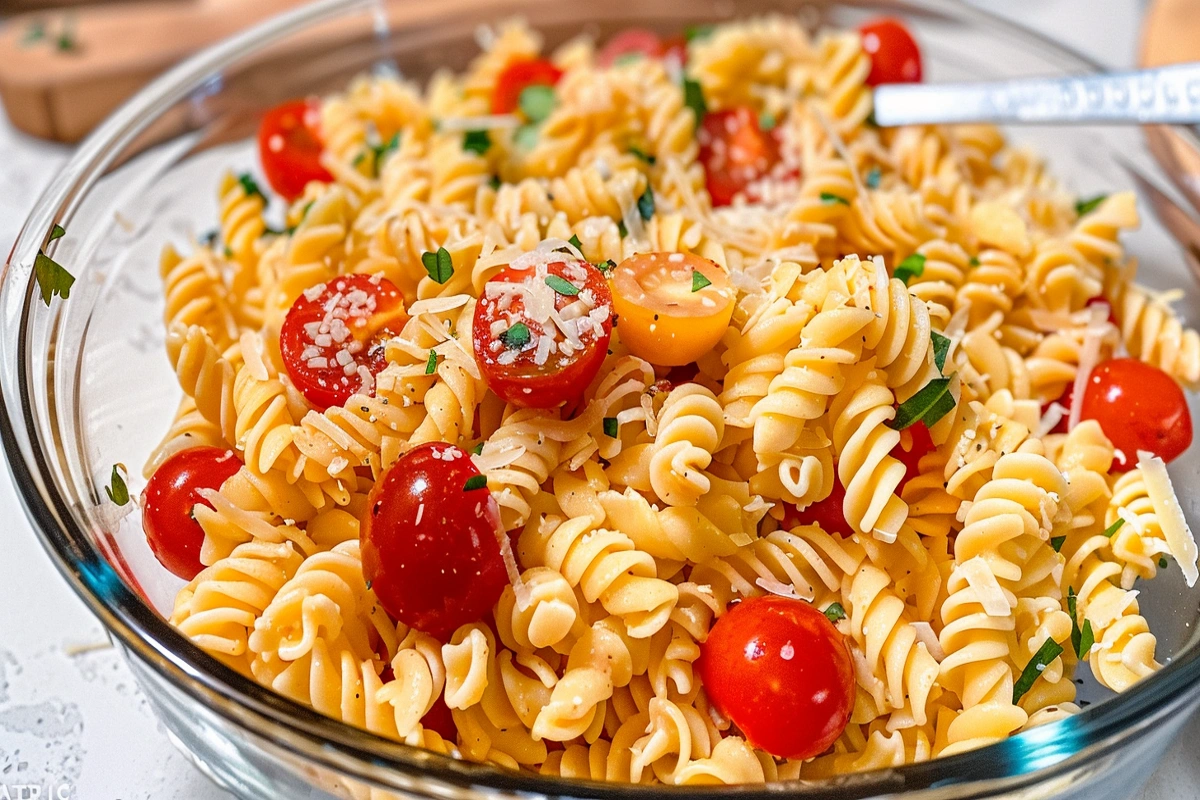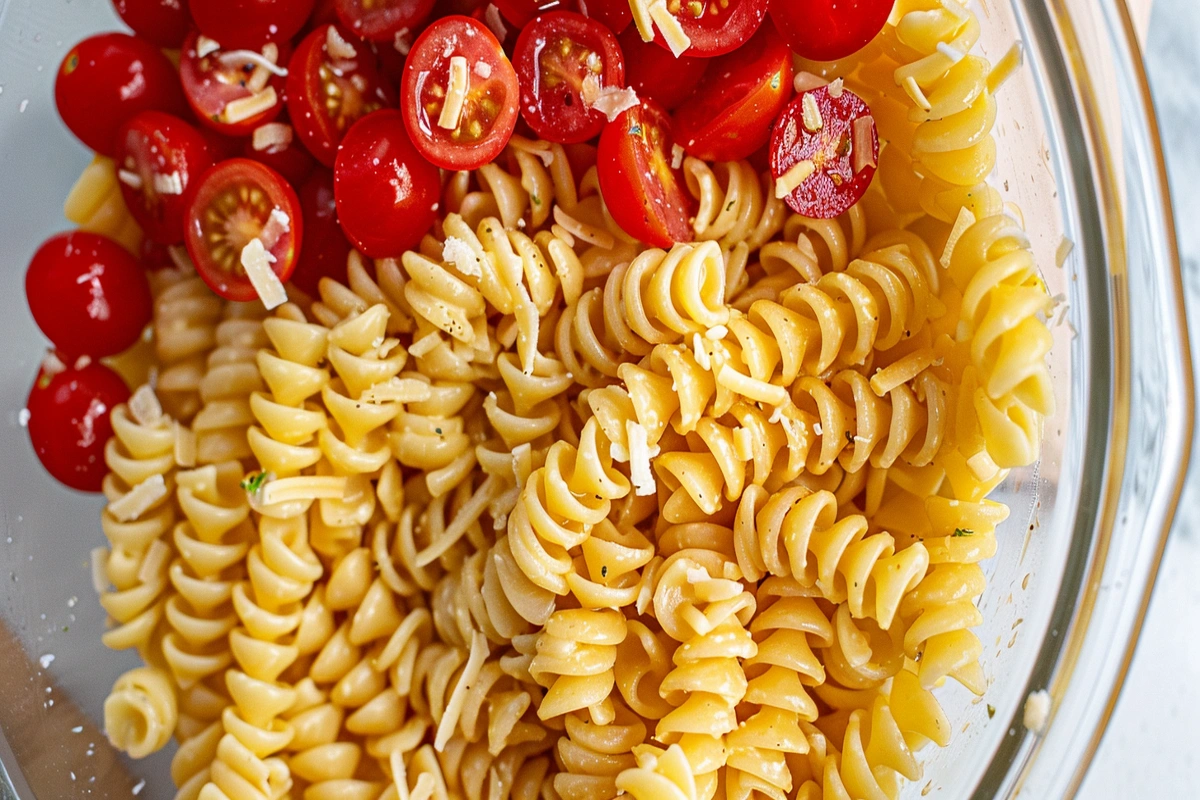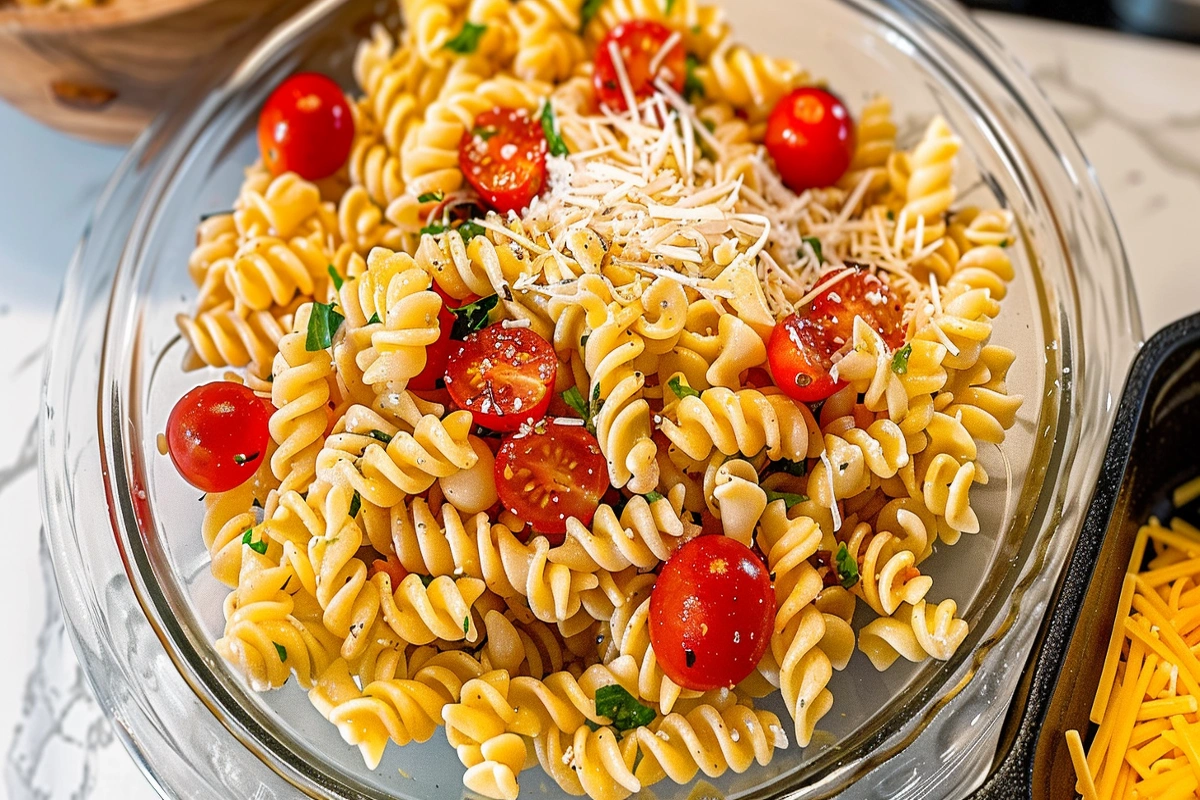Creating a perfect pasta salad requires much more thought than simply mixing together some cooked pasta, fresh vegetables, and a tasty dressing. While those ingredients are essential, the type of pasta you choose plays a surprisingly crucial role in determining whether your salad will be a hit or a miss. Not all pastas are created equal, and using the wrong one can lead to bland flavors, uneven textures, and a lackluster appearance. Choosing the right pasta ensures that your salad is not only visually appealing but also holds up well against the dressing and mix-ins, maintaining its shape and bite even when served cold. Let’s have a look on What Pasta Is Not Recommended For Pasta Salads.
On the other hand, using the wrong type of pasta can completely ruin your dish. Thin or delicate pasta, for example, may break apart and become mushy when combined with heavier ingredients. Pastas with smooth surfaces often allow dressings and seasonings to slide right off, leaving your salad tasting underwhelming and unbalanced. This guide will help you understand which pasta types to avoid, why they don’t work well in pasta salads, and the best alternatives to ensure that every forkful of your salad is flavorful, texturally pleasing, and delightful to eat.
Why Choosing the Right Pasta Matters
Choosing the right pasta for your salad is crucial because it affects the overall texture, flavor absorption, and presentation of the dish. If you use a thin, smooth pasta, the dressing will slide right off, making your salad taste bland. On the other hand, if you choose a thicker pasta that has ridges and crevices, it will hold onto the dressing and the added ingredients much better. The goal is to use a sturdy pasta that complements the flavors and maintains its integrity even when served cold.
Factors to Consider When Choosing Pasta for Salads
When selecting the right pasta, you need to think about the shape, size, surface texture, and density. Each of these factors contributes to how well the pasta will pair with the other ingredients in your salad.
- Shape and Surface Texture
- Rougher surfaces or pasta with ridges (like fusilli or rotini) are great for holding onto dressing, while smooth surfaces, like spaghetti, tend to let the dressing slip away.
- Size and Consistency
- Choose small to medium-sized pasta shapes that are easy to spear with a fork and can capture bits of other ingredients.
- Density and Structure
- Avoid delicate pasta types like angel hair or vermicelli, which will become mushy when mixed with heavier components in the salad.
For a deeper dive into pasta selection tips and how to pair pasta with sauces, check out the best practices for pasta dishes.
Pasta Types That Are Not Recommended for Pasta Salads

Although it might seem like any pasta can be used for a salad, certain types are not suitable. Here’s a list of pasta shapes to avoid and the reasons why they don’t work well in cold dishes.
1. Spaghetti, Linguine, and Angel Hair
These long, thin pastas are not ideal for pasta salads because they:
- Slip and Slide
- Their smooth surface makes it difficult for dressings to cling, leading to a bland-tasting salad.
- Clump Together
- They tend to stick together, making the salad hard to mix, portion, and serve.
- Difficult to Eat Cold
- Long strands can be messy and difficult to manage in a cold salad format, resulting in a less appealing dish.
2. Penne and Rigatoni
Although these pastas work well in hot dishes, they often fail in salads because they:
- Have Too Much Surface Area
- They overpower other ingredients in the salad.
- Don’t Hold Dressings Properly
- Their hollow shapes can cause dressings and small ingredients to slip through, creating an uneven flavor distribution.
3. Jumbo Shells or Manicotti
Larger pasta shapes like jumbo shells or manicotti are difficult to balance in a salad due to:
- Size Imbalance
- Their large size makes it difficult to get a balanced bite.
- Ingredient Distribution Issues
- These shapes often overwhelm the more delicate salad ingredients, making it challenging to achieve the right texture.
4. Delicate Pastas (e.g., Orzo, Fregola)
Although small pastas like orzo or fregola might seem ideal, they often result in a mushy texture. Avoid these because:
- They Get Soggy Quickly
- These pastas absorb too much dressing, making them soggy and unpleasant.
- Lack of Texture
- They don’t offer the sturdy bite needed for a satisfying salad, and the overall texture can become gluey.
Why Some Pastas Fail in Pasta Salads: A Technical Breakdown
Not all pastas are created equal when it comes to cold dishes. Understanding the science behind pasta can help explain why certain types just don’t work in salads. Here are a few reasons:
1. High-Starch Content
- High-starch pastas become gummy when chilled, turning your pasta salad into a sticky mess.
2. Smooth Surfaces Repel Dressings
- Dressings slide off pastas with smooth surfaces, making the salad taste bland and under-seasoned.
3. Thin Noodles Lose Their Shape
- Long, thin pastas tend to lose their structure and clump together when mixed with heavier ingredients, making the salad difficult to mix and serve.
Best Pasta Alternatives for Pasta Salads
If you want your pasta salad to have flavorful, well-balanced bites, opt for pastas that are sturdy and have enough surface area to capture dressings and other ingredients. Here are some of the top choices:
1. Short, Sturdy Shapes (Rotini, Bow Ties, Fusilli)
- These pasta shapes have plenty of crevices to trap dressing and ingredients, ensuring every bite is packed with flavor.
2. Ridges and Twists (Cavatappi, Gemelli)
- Ridges and twists provide extra surface area for holding onto seasonings and dressings, making them ideal for cold dishes.
3. Pasta With Hollow Centers (Orecchiette)
- Orecchiette is known for its unique shape that acts as a cup, perfect for holding onto bits of dressing and small ingredients.
4. Whole Wheat and Gluten-Free Options
- Whole wheat pastas have a slightly denser texture, which helps them maintain structure in cold dishes. Similarly, gluten-free pastas like brown rice pasta can also work well, provided they are cooked properly.
For more ideas on pasta salad recipes, explore unique pasta salad combinations that use these types of pasta effectively.
How to Cook Pasta Perfectly for Salads
Cooking pasta for a salad requires a slightly different approach than cooking pasta for a hot dish. Here are some tips to get it just right:
- Cook Al Dente
- Always cook your pasta until just al dente. This will help it maintain its structure and bite when mixed with other ingredients.
- Season the Water Generously
- Use plenty of salt in the water to make the pasta flavorful on its own. This step is critical as under-seasoned pasta will taste bland.
- Rinse and Cool Immediately
- After draining, rinse the pasta under cold water to stop the cooking process and prevent it from turning mushy. This also helps in removing excess starch.
- Drizzle With Olive Oil
- If not using the pasta immediately, toss it with a small amount of olive oil to prevent sticking. This will keep the pasta separate and fresh until you’re ready to mix it with the salad.
Common Mistakes to Avoid When Making Pasta Salad
Making a pasta salad seems simple, but there are a few common mistakes that can ruin the dish. Here’s what to watch out for:
1. Using the Wrong Pasta Shape
- Thin or smooth pastas don’t work well because they fail to hold onto the dressing. Choose short, ridged pastas instead.
2. Overcooking the Pasta
- Overcooked pasta turns mushy and absorbs too much dressing, making the salad soggy. Aim for al dente to maintain texture.
3. Adding Dressing Too Early
- Always add the dressing just before serving to keep the pasta salad fresh and flavorful. Early dressing can cause the pasta to absorb too much liquid and become heavy.
4. Not Balancing Ingredients Properly
- Use a mix of crunchy, creamy, and acidic ingredients to ensure a balanced flavor in every bite.
5. Forgetting to Season the Pasta
- Pasta should be well-seasoned even before adding it to the salad. Make sure your pasta is cooked in heavily salted water to infuse it with flavor from the start.
Expert Tips for Creating the Best Pasta Salad
- Choose the Right Mix-ins
Include a variety of vegetables, proteins, and cheeses to add both flavor and texture. - Dress the Salad Properly
Make sure the dressing is thick enough to coat every bite evenly. Creamy dressings work well with sturdy pastas like rotini or farfalle. - Add Fresh Herbs and Seasonings Last
Fresh herbs can add a burst of flavor to your salad, so add them just before serving to ensure their freshness.
FAQs About What Pasta Is Not Recommended For Pasta Salads?

1. What Pasta Shape is Best for Pasta Salad?
Short, sturdy shapes like fusilli, farfalle, and rotini work best because they hold onto the dressing and mix-ins.
2. Can You Use Whole Wheat Pasta for Pasta Salads?
Yes, but be cautious as whole wheat pasta can be heavier and may overpower lighter ingredients.
3. Should You Rinse Pasta Before Making Pasta Salad?
Absolutely. Rinsing stops the cooking process and removes excess starch that could make the salad gummy.
4. Why Does My Pasta Salad Turn Dry?
The pasta might be overcooked or the dressing is being added too early. Add extra dressing just before serving to maintain moisture.
5. Can I Make Pasta Salad Ahead of Time?
Yes, but remember to store it properly and add dressing just before serving to keep it fresh and flavorful.
Conclusion: What Pasta Is Not Recommended For Pasta Salads?
Choosing the right pasta for your salad is essential for creating a delicious and well-balanced dish. Avoid thin, smooth, or large pasta shapes that don’t hold up well in a salad. Instead, opt for short, sturdy pastas like rotini, farfalle, or fusilli that can capture the dressing and hold up against the other ingredients. By choosing the right pasta, cooking it correctly, and balancing your flavors, you’ll be able to create a pasta salad that’s the highlight of any meal.

